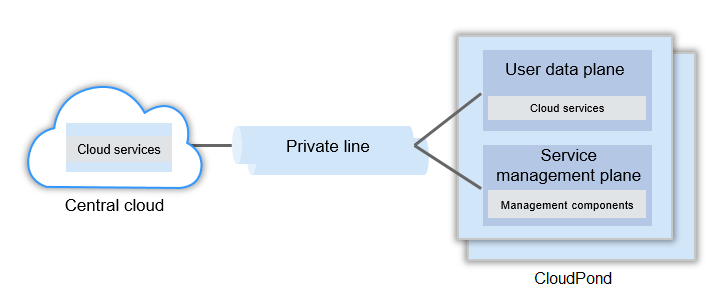Collaboration Deployment
Applications deployed at the edge and on the cloud need to communicate with each other for data transmission, backup, API invoking, permission authentication, and so on. EIP and shared bandwidth configurations need to be adjusted to meet specific service requirements. Edge-cloud networking with different reliability levels can be configured.
Background
A customer plans to build a data analysis platform based on industry AI models to provide more accurate sales and production prediction for their core services. They decide to deploy CloudPond in their own data center and use it together with the central cloud. The service status is as follows:
- Data needs to be collected and processed at scattered points, and then stored in a data warehouse for analysis. Huawei Cloud IoT will be used at each point for public cloud access.
- Some analyzed raw data requires high security and cannot be stored outside the customer data center for a long time according to industry laws and regulations.
- There is a private line between the data center and the central cloud, which can be used for heavy-traffic data transmission.
Networking Configuration
The recommended edge-cloud networking is shown in Figure 1.
Key Points
- Services that do not need to store data for a long time, such as data collection, data processing, and AI modeling, are deployed on the public cloud. Services such as databases, data analysis, data warehouses, and BI are deployed on CloudPond. This ensures security compliance and reduces overall costs.
- The bandwidth of the private line between the customer data center and Huawei Cloud can be used directly without configuring public IP addresses or shared bandwidths.
- The edge and the cloud communicate with each other in a VPC for frequent data transmission and security.
- The edge and the cloud are interconnected by private lines for high service reliability. Multiple CloudPond sites are deployed locally to ensure the high reliability of core data.
Related Operations
Feedback
Was this page helpful?
Provide feedbackThank you very much for your feedback. We will continue working to improve the documentation.See the reply and handling status in My Cloud VOC.
For any further questions, feel free to contact us through the chatbot.
Chatbot






